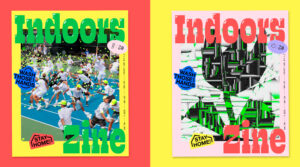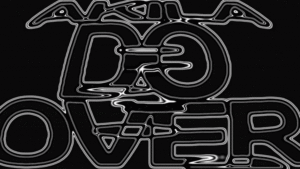Dedicated to the remembrance of his late grandmother, Taiwan-based freelance Graphic Designer Shun-Zhi Yang (楊順志) has created a project entitled The Buddhist Sutra Reconstruction, which merges traditionally inspired scriptures with performance-based elements to reimagine ancient Chinese typographic practices and spiritual elements of rituals.
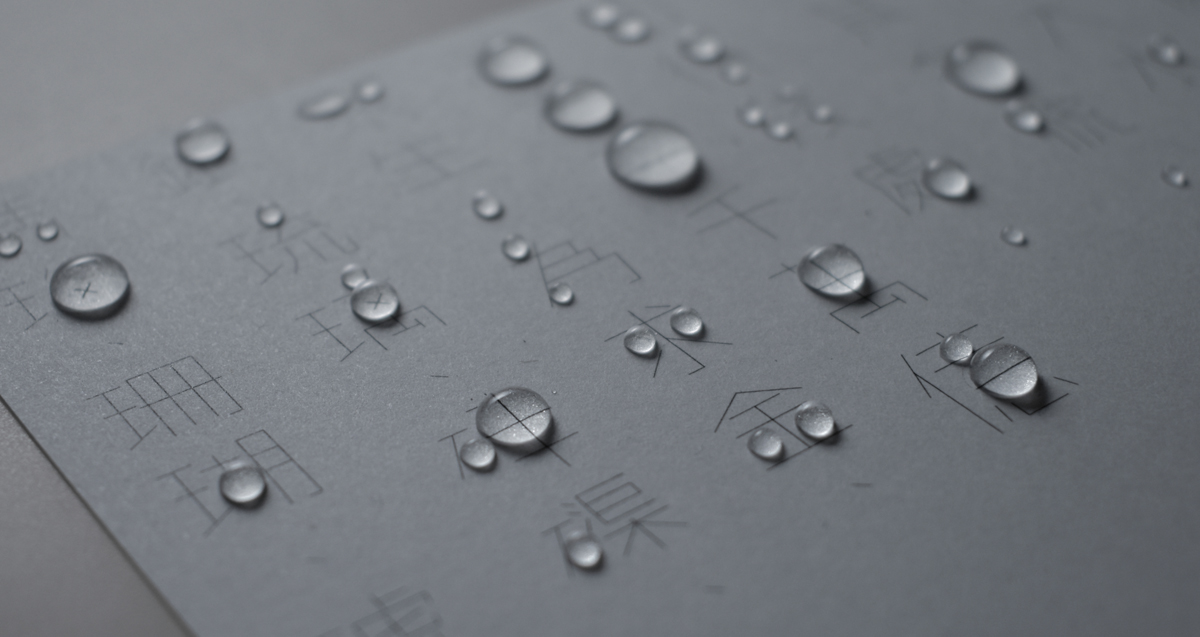

“In Taiwan,” he says, “we usually hold Buddhist funerals when our elders pass away. When I was at my Grandma’s funeral, I suddenly realised that the Buddhist scriptures I saw and held in my hands felt quite out of place and separated from the scriptures I heard in my ears. That scripture sounded solemn and peaceful, but the typography I saw was too casual. These scriptures have been spreading for thousands of years, but I can’t feel the traces of such times in the scriptures when I read them on the page. So I decided to create a Buddhist scripture that would allow people to feel the peace and history behind it.”
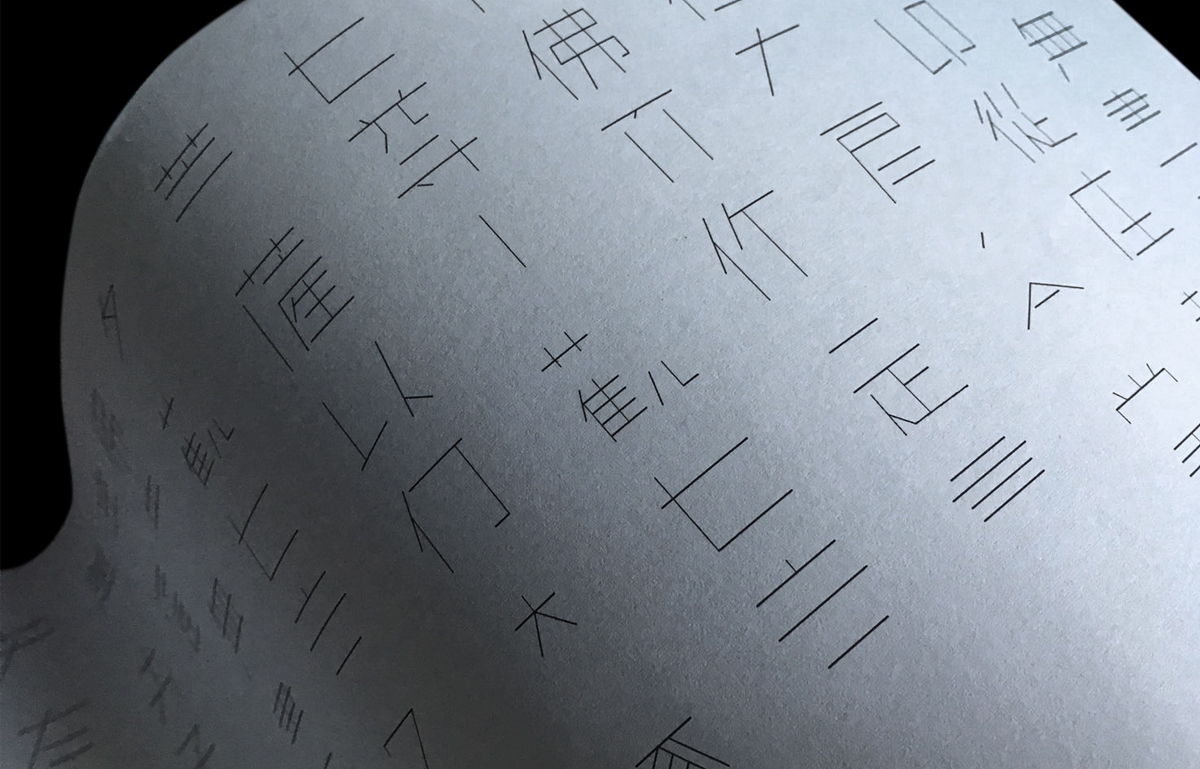
The typeface is created from the basic shapes of the Buddha Bead, rebuilt around Chinese typographic forms, but the addition of water – the performance of dripping it peacefully onto the type – deals with a wider spiritual and philosophical idea related to Buddhism: Śūnyatā. Translating loosely from Sanskrit as a kind of emptiness or void, Śūnyatā is seen in Buddhism as a kind of “essence of the world,” Shun-Zhi Yang says. It views all existence as relational – things only existing by way of their relations and as part of an assemblage of things, rather than the existence of singular, fixed, essential or sealed forms of being. It views emptiness as a concept in a positive, generative light, which is an extremely different view than that assumed in Western schools of thought, and can perhaps be understood as a more open and fluid view on life and existence.
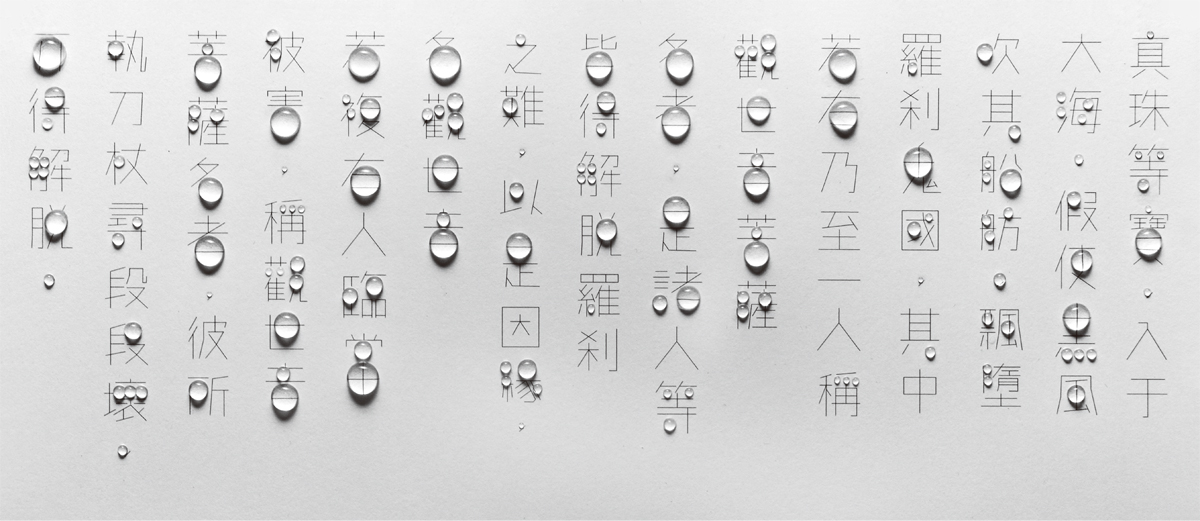
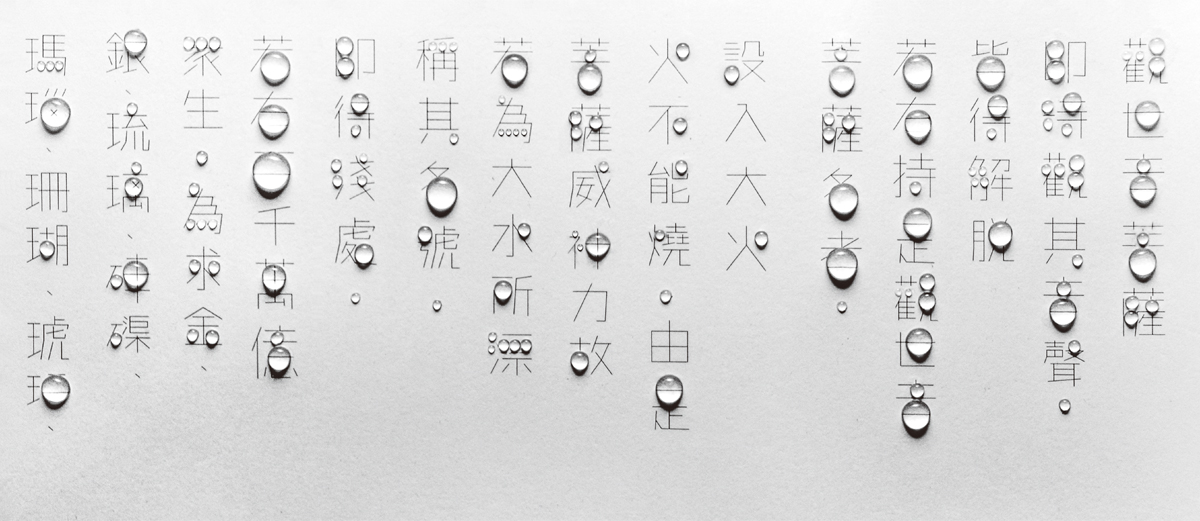
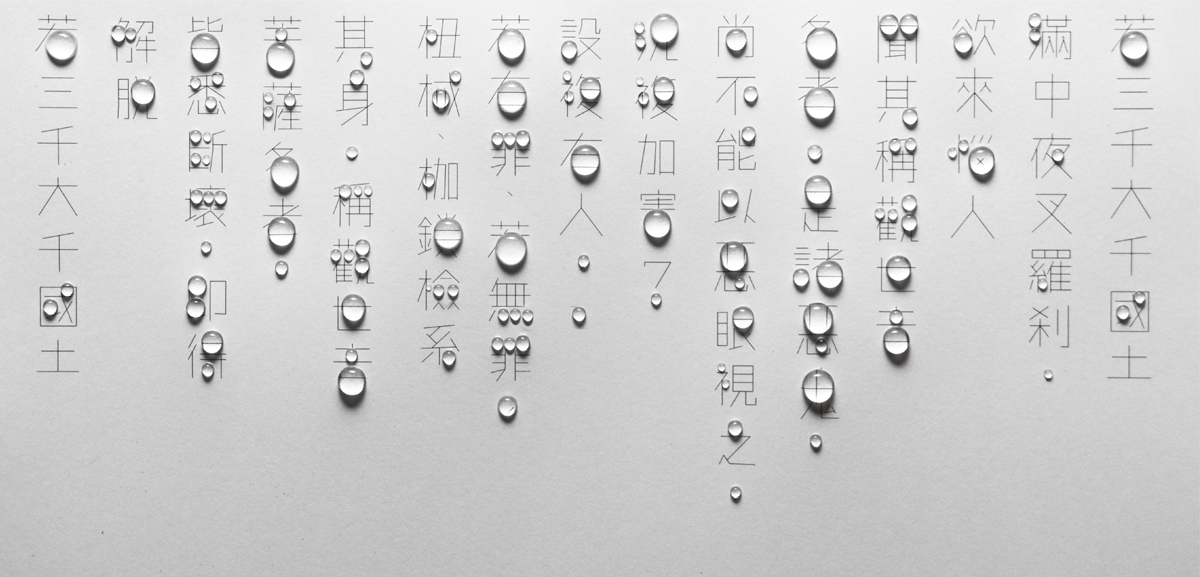
“The shapes of Chinese characters are basically a bunch of lines and squares, like a meaningful ink wash painting,” he says, “and the shape of the Buddha Bead is a line with a bunch of circles. The shape composition between them is very similar, both of them are shaped by lines with some geometric shapes. So I disassembled the shape of the Buddha Bead, replacing some squares and lines in the Chinese characters with the straight lines and circles in the Buddha Bead, and created a shape composition in the characters that is almost like the Buddha Bead…Now, when those Chinese characters are put together, it will look like a string of Buddha Beads.”

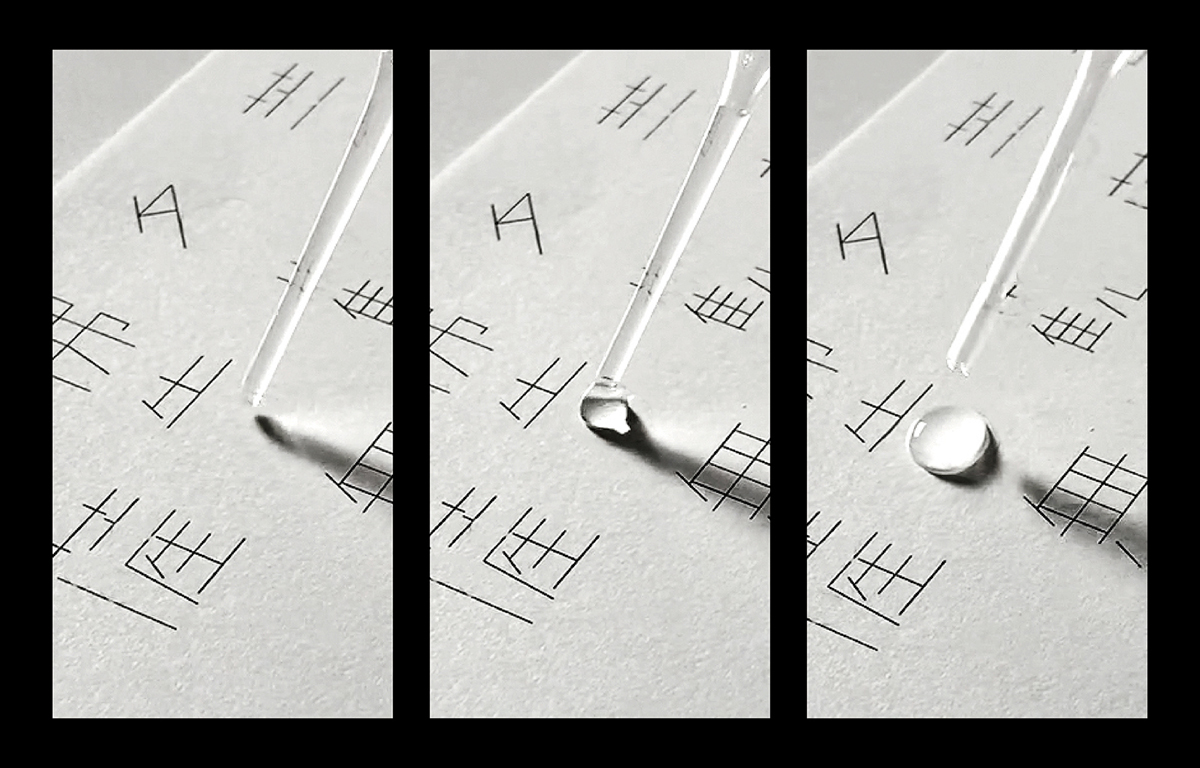
Due to the nature of the project, Shun-Zhi Yang felt that the design needed to do more than simply be a beautiful construction of type – it needed to be spiritual and meaningful. Distilled not only into the design of the script, the project was completed by a reinterpreted ritual of peacefully dripping the water onto the type. “The purification process of dripping in this project is another behaviour linked to transcribing the Sutra,” he says. “Buddhists will chant the scriptures, and use their hands, and that is very exhausting. Praying like that needs a heart of patience and perseverance, and I noticed that this behaviour affects how people see these words.”
“After I found this information,” he continues, “I started to think about inventing a new form of transcription of the Sutra, to make sure that the Buddhist Sutra I made would bring up that concentration again and be meaningful with Buddhist beliefs…Water is so meaningful and pure in the Buddhist world, and it can be shaped like a sphere, so I moved out the circle in the typeface I made, printed the remaining lines, and tried dripping the water to fill in the missing part, making the typeface gradually complete.”
With the circles removed, the typeface becomes complete through the peaceful water dripping ritual, bringing the typography closer to its history and spiritual roots. “For me,” Shun-Zhi Yang says, “this behaviour is very spiritual – but in this age, this feeling may be forgotten…I just hope this project can heal people’s hearts for a short time, bring people calm and peace, and let them stop being negative. I hope it helps them to feel the world of Buddhism, or just stop and think and feel the world more.”


